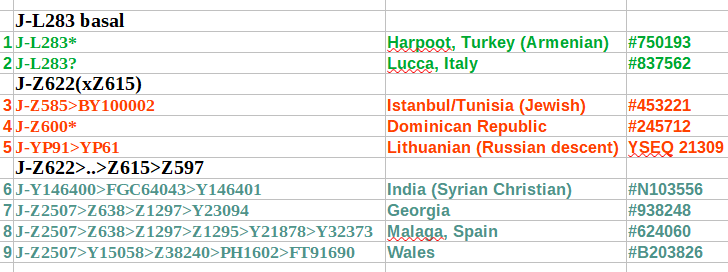mount123
Regular Member
- Messages
- 993
- Reaction score
- 678
- Points
- 93
- Y-DNA haplogroup
- J2b-L283>Y126399
- mtDNA haplogroup
- J1c7a
It does not take much effort to scroll through this thread to find answers or explanations to questions that might concern one.
Quote from Trojet regarding your question:
Quote from Trojet regarding your question:
Three new samples have been added to the J2b-L283 ancient DNA map:
- NEO806, 1063 BCE, Grotta Delle Mura, Italy_BronzeAge, J2b2a1a1a1a1a1b, which corresponds to: J2b-L283>>Z638>Z1297>Z1295>Y21878
- R11751, 569 BCE, Kerkouane, Tunisia Iron Age: J2b-L283>>Y15058>Z38240>PH1602
- R11753, 531 BCE, Kerkouane, Tunisia Iron Age: J2b-L283>>Y15058>Z38240
Considering the timing and the location, NEO806 should be a Iapygian (Paucetian?) sample. J2b-L283 has been confirmed among the Daunians as well, though no deeper classification is available due to low coverage. This sample suggests that Iapygians carried at least some J-Z638 subclades, which is the predominant J2b-L283 branch among the Albanians.
With regards to R11751 and R11753, considering the phylogeny of J-Z38240>PH1602 and since we have older J-Z38240 aDNA samples from modern Croatia, their more distant origin likely lies somewhere in the eastern Adriatic.
Kerkouane, which is in the Tunisian coast, seems to have been a trade town: "Hardly any agriculture: this town lived for trade (with Phoenicia itself and the Greek world) and trades (stonemasons, purple painters, potters...). Still, several fishermen". https://www.livius.org/articles/place/kerkouane/




